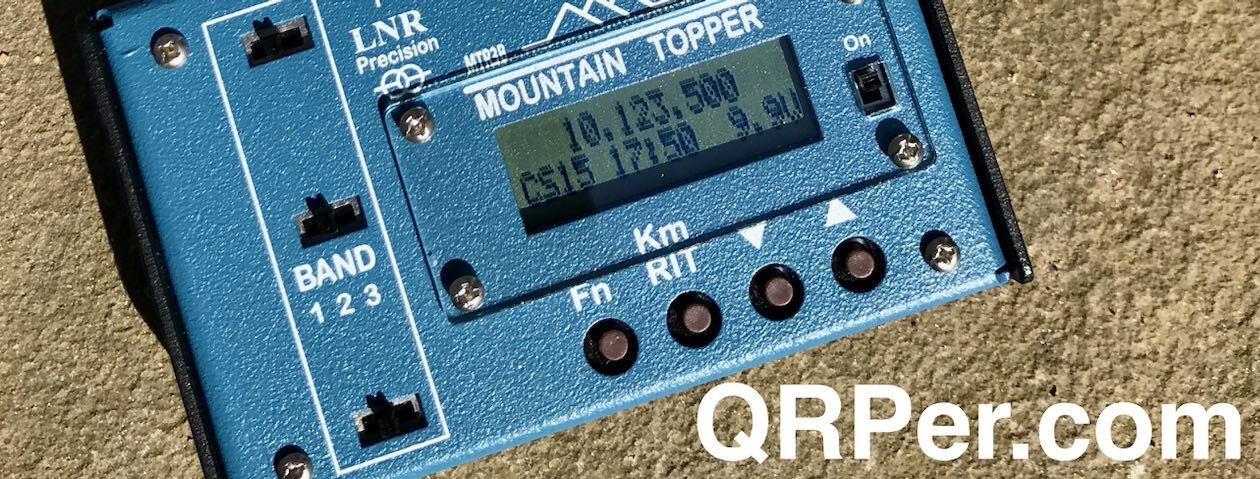Many thanks to Steve (MW0SAW) who shares the following guest post:
Getting a KH1 into Wales and activating a couple of SOTA summits
by Steve (MW0SAW)
I suspect like many QRP enthusiasts, when the brochure of the KH1 surfaced on the Elecraft FTP site, and the YouTube videos appeared, I worked myself into a frenzy of radio desire for the KH1. I knew I had to have one, end of story!
I was so keen to place my order, I totally missed the small print about not being able to ship to the UK or EU because of the lack of CE certification. Or UKCA for that matter. So I placed an order online with Elecraft on 21st Oct 2023 and later it was cancelled because of my location.
Waters and Stanton used to be Elecraft dealers in the UK, in fact I got my KX2 from there a few years ago. But sadly they no longer sell Elecraft products.
Looking on the dealer list, I turned my attention to Rene and Carine at Lutz Electronics in Switzerland. Although a more expensive route to ownership, Lutz have an agreement to buy the KH1 in as a kit and assemble the unit as a service before shipping on to the customer.
So after quite a few emails back and fore with Carine, I learnt I had reserved one of a batch of 40 units destined for the Swiss border. This was around early April.
A few weeks later, on 26th April, I got the email from Lutz requesting international bank transfer payment.
It felt I was really close to getting a KH1 in my hand now, or so I thought!
2nd May I got the tracking number, and by this time I was about to pop with excitement. I was checking the tracking at almost an hourly basis by now! It arrived in London Heathrow and that’s exactly where it stopped for a week. 🙁
The unit was held by customs and I just could not find any information on who to talk to. So after a week of radio silence, a letter from UK Borderforce arrived requesting I assign myself a customs agent to get my parcel cleared. There was even a mention that the parcel would be returned or even destroyed!
Long story slightly shorter, after several more stressful days of worry, I managed to find an extremely efficient company called UK import services. It did cost me a fee, but within a couple of days of providing the invoice and seller information, they got the parcel cleared.
Saturday the 25th May 2024…the big day! I remember pacing around the house looking up the street for the postman. The parcel was handed over and I dashed inside my home to open the box.
OMG there is was, in my hands, wow so small and such a thing of radio QRP beauty!
My friend Lee (M0VKR) also received his that morning and immediately packed his car to head for his nearest SOTA summit: High Willhays (G/DC-001).
Conditions had been terrible with the solar activity, but I managed to get my first QSO with Lee on 40m, in fact KH1 to KH1. I did have to plug it into my home QTH ZS6BKW to make the trip.
So two days later, I was presented with the opportunity and decided to grab a local summit: Craig yr Allt (GW/SW-037).
Conditions weren’t great but I wasn’t put off trying. I managed to qualify with the whip antenna and 17m came up with the goods to qualify.
I was struck by how small and light the unit is, and just how quick the station is to deploy.
 In the distance the Bristol Channel and the islands of Flat Holm and Steep Holm. Flat Holm being the place where Marconi sent his first oversea radio signal to Lavernock Point.
In the distance the Bristol Channel and the islands of Flat Holm and Steep Holm. Flat Holm being the place where Marconi sent his first oversea radio signal to Lavernock Point.
The following weekend I took the KH1 out to the SOTA summit of Mynydd Y Glyn (GW/SW-027). Another day of terrible radio propagation. This time I deployed one of my MW0SAW EFHW antennas and the Bamatech TP-III key.
 So despite the difficulties getting the radio, and despite the poor radio conditions it was great to be out with the KH1.
So despite the difficulties getting the radio, and despite the poor radio conditions it was great to be out with the KH1.
It now goes everywhere with me, it’s insane how quick you can deploy it. Even managed to chase a German SOTA station from the office carpark, on 30m with the standard whip and 13 foot counterpoise!!
73 from Wales.
de MW0SAW



















































































































